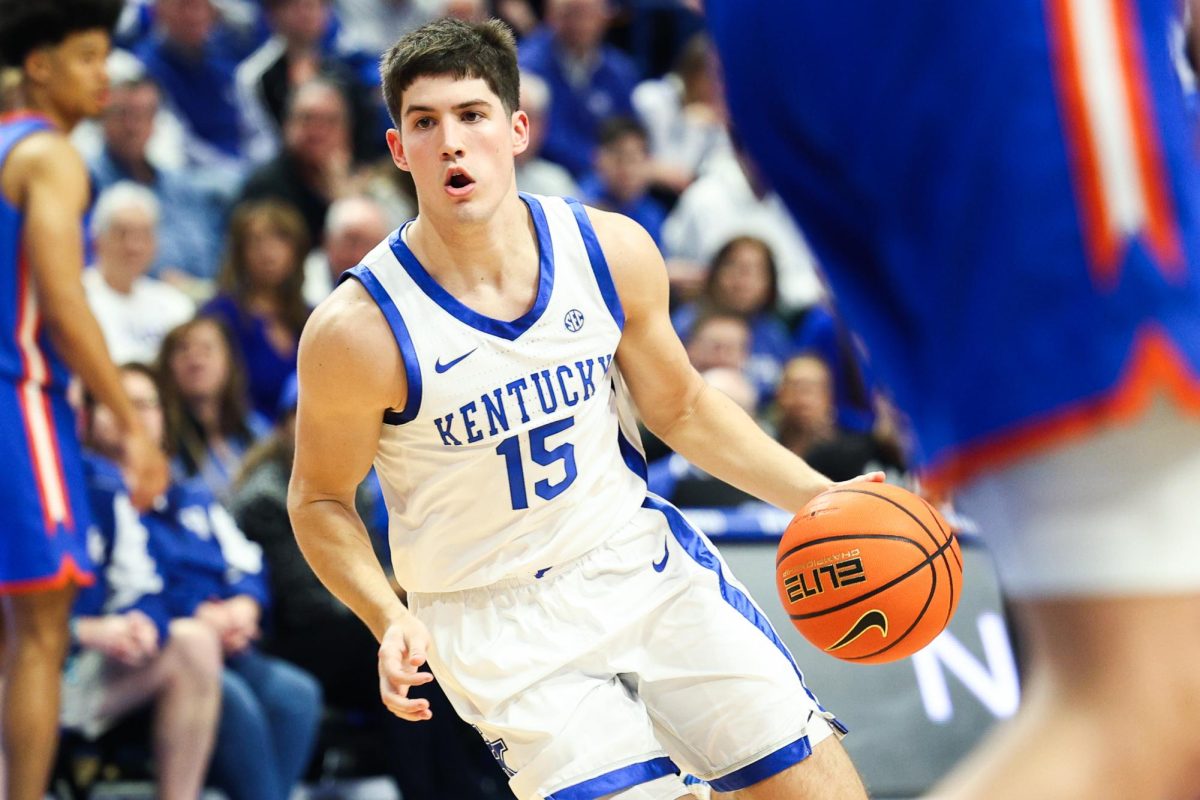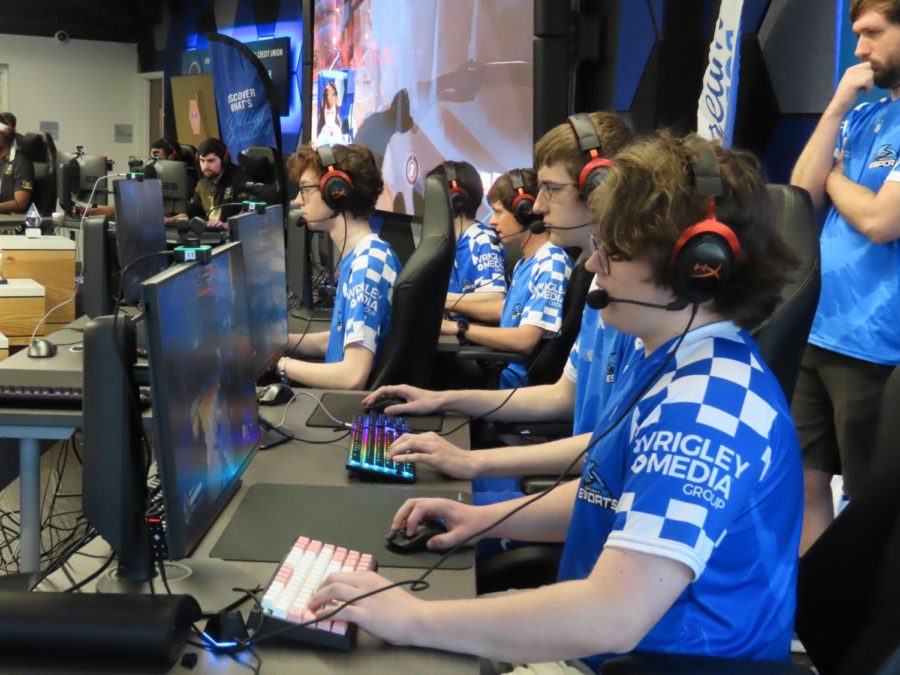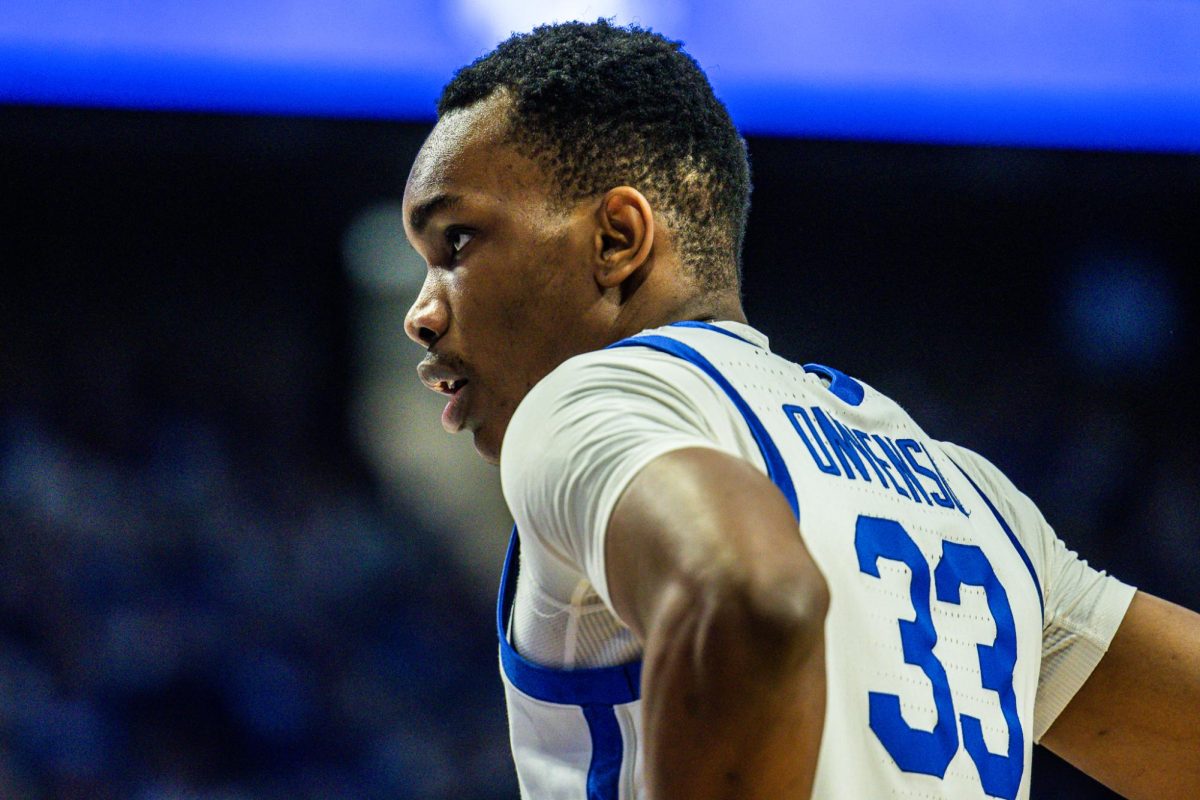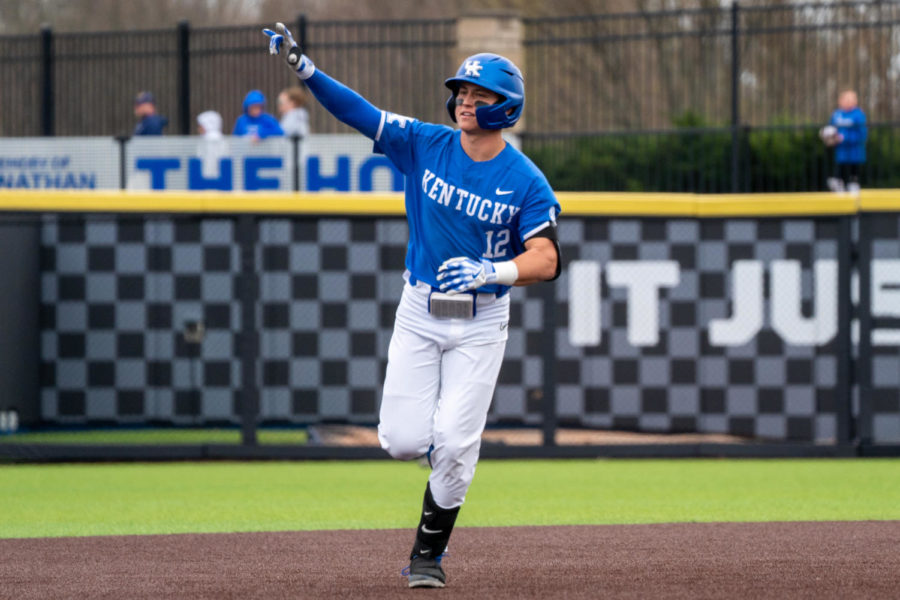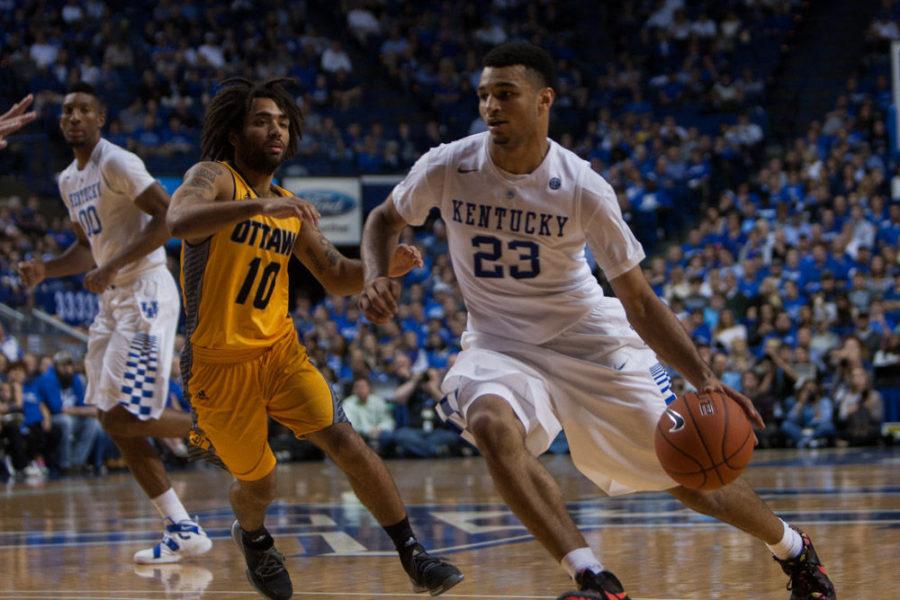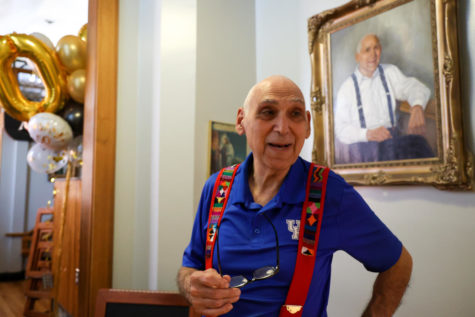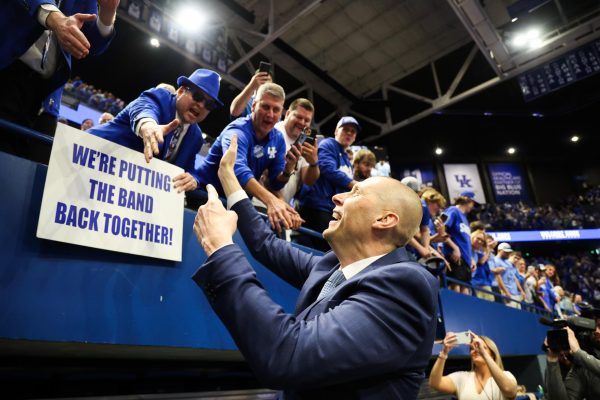What we learned from Ottawa exhibition
November 3, 2015
By Josh Ellis
Monday’s exhibition against the Ottawa Braves was the first chance Big Blue Nation had to watch UK face a team other than themselves, and the blue and white did not disappoint.
So what did we learn about the 2015-16 Cats?
They attack. Immediately.
UK got off to a quick 13-0 start not even three full minutes into the game, five of those coming from sophomore leader and point guard Tyler Ulis. Joining Ulis in the starting unit was Isaiah Briscoe, Jamal Murray, Marcus Lee and Skal Labissiere.
The Cats showed a lot of positives on Monday’s 117-58 thrashing of Ottawa, but one factor remained the same throughout the game — quickness. UK was beating opponents in transition, off the dribble and to the corner three.
Check out more photos from the game in our gallery
The new 30 second shot clock won’t be a problem for UK this season. The team can get itself into a motion offense with just two passes, or refer to its in-and-out game with Labissiere and Murray, and then it’s pick your poison for the opponent.
A three-headed monster of Ulis, Briscoe and Murray led the transition for the Cats, although all 12 players can run the floor well. And the Cats do more than just finish with an easy layup off the fast-break, they can lob it to a big man for a thunderous dunk or hit a wide open man in the corner for a knock-down three.
“It’s great because you always have people constantly looking for somebody open and for someone to score,” Lee said. “When we do this dribble-drive, we can throw it up to not just me, but to Skal. You can just throw it to the rim and one of use will get it.”
Like basketball photos? Take a look at our Big Blue Madness gallery
UK ended the evening with 26 fast break points, a number that might even increase over the course of the season. If your team is playing UK this year and wants a chance to win, they better get back on defense.
Murray, one of the most dangerous Cats offensively, showed he will be a hassle to guard for 30 minutes a game. The Ontario, Canada, native can blow by his man with an explosive first step, then drill a three the next time down the floor if his man gives him too much space.
He finished with 22 points, 12 rebounds and nine assists, just one assist shy of recording the second triple-double in UK history, though it wouldn’t have counted officially because it was an exhibition.
“I think he’s going to have a lot of nights like that, where he’s just going to go off and put the ball in the basket,” Briscoe said. “And as his teammate I’m going to be there cheering him on. That’s my man.”
Murray wasn’t the only one putting the ball through the net at an exceptionally high rate. The whole team was shooting lights out. UK held a 36-7 lead at the under-12 media timeout, and was shooting 14-16 from the field and 6-7 from three-point range.
The Cats finished the game shooting 59.7 percent from the field and 57.9 percent from three-point range. Yes, they were playing against an NAIA school, but these boys can shoot it. From just about anywhere on the court, too.
And last, but not least, Ulis did what Ulis does. The 5-foot-9, 160-pound crafty point guard elevates everyone’s game when he’s on the floor. Whether it’s dishing a lob to Alex Poythress, penetrating and kicking to Murray, or knocking down the open shot, Ulis gets it done. On offense and defense.
The “floor general,” as head coach John Calipari referred to Ulis earlier this season, dictated pace of play that kept the Cats on the attack and the Braves on its heels. Ulis finished the exhibition with 17 points, 10 assists, four rebounds and zero turnovers.
“He’s a leader on the court, he puts everyone in the right spot and right position,” Murray said. “We look to him to run the offense and we play off of that.”
Yet Calipari wasn’t totally satisfied with his team, saying the team is “behind” from where it needs to be at this point of the season and his main concern moving forward is who to play when the starters get tired.
“I would say we’re probably we’re going to have probably three guys play 30 minutes, and then probably a couple other guys play 28,27,” Calipari said. “Then the question becomes, ‘Do we play six, seven or eight?’ Who fights for those other spots? Do we get to nine? I don’t know.”









































